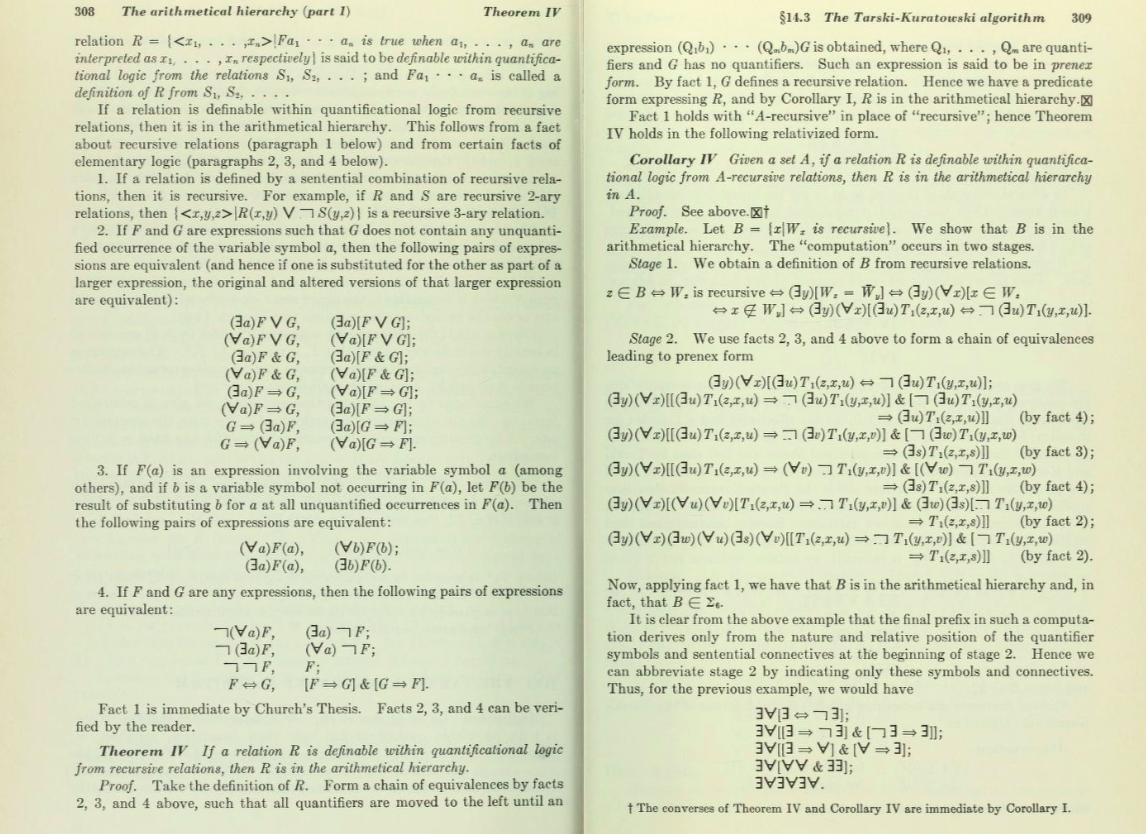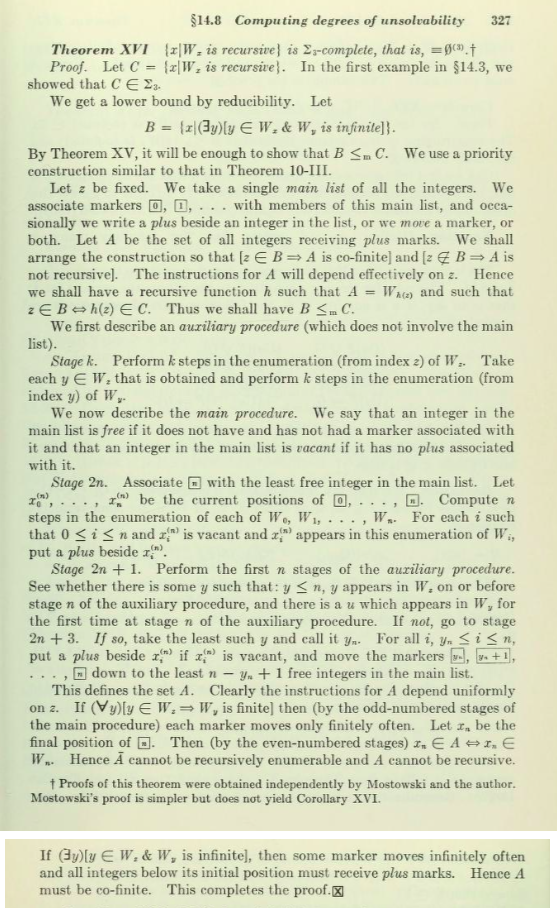- MathNotebook
- MathConcepts
- StudyMath
- Geometry
- Logic
- Bott periodicity
- CategoryTheory
- FieldWithOneElement
- MathDiscovery
- Math Connections
Epistemology
- m a t h 4 w i s d o m - g m a i l
- +370 607 27 665
- My work is in the Public Domain for all to share freely.
- 读物 书 影片 维基百科
Introduction E9F5FC
Questions FFFFC0
Software
Math connections, Divisions, Automata, Yates index set theorem, Adjunction
Understand how the arithmetical hierarchy relates to the foursome and sevensome.
- Study the classification of sets in the jump hierarchy as in Soare's book.
Readings
Three minds
Answering mind
- Knows that for some input {$x$} and some time {$t$} the machine {$z$} will halt, there will be an answer, an output {$y$}.
- {$Nonempty(z)\Leftrightarrow W_z\neq \varnothing \Leftrightarrow \exists x \; \exists t \;\exists y\;\neg \neg U(z,t,y,x)$}
Questioning mind
- Knows that once the input {$x$} is large enough, the machine {$z$} will never halt, there will never be an answer.
- In other words, answers are exceptional.
- {$Finite(z)\Leftrightarrow W_z \textrm{ is finite }\Leftrightarrow \exists X \; \forall x \; \exists q \;\neg (x>X\Rightarrow U(z,t,y,x))$} where {$q$} is superfluous
Investigating mind
- Aligns what is known (what will halt) and what is not known (what will never halt).
- Complements a machine that knows (halts) and a machine that does not know (does not halt).
{$Recursive(z)\Leftrightarrow W_z\textrm{ is recursive }\Leftrightarrow \exists m \forall x (x\in W_z \Leftrightarrow x\notin W_m) \Leftrightarrow $}
{$\exists m\; \forall x\; \exists t_{m,g}\; \forall t_{z,g}\; \exists t_{z,c}\; \forall t_{m,c}(((U(z,t_{z,g},y_{z,x},x)\Rightarrow \neg (U(m,t_{m,c},y_{m,x},x))∧(\neg U(m,t_{m,g},y_{m,x},x)\Rightarrow (U(z,t_{z,c},y_{z,x},x)))$}
Ideas
The ways of figuring things out in mathematics include four patterns from analysis which exhibit stages in the arithmetical hierarchy:
- {$\Pi_1$} Induction {$\forall x P(x)$}
- {$\Sigma_2$} Maximum or minimum {$\forall x \exists y (P(x)\Rightarrow P(y))$}
- {$\Pi_3$} Least upper bound or greatest lower bound {$\forall x \exists y \forall z ((x \leq y) \wedge (x \leq z \Rightarrow y \leq z))$}
- {$\Sigma_4$} Limit {$\forall \delta \exists \epsilon \forall x \exists x_0 (|x-x_0|<\delta \Rightarrow |F(x)-F(x_0)|<\epsilon )$}
In general, a logical form has three parts:
- Given...
- Quantifiers...
- Statement...
Hartley Rogers. Theory of recursive functions and effective computability.
Notes
- Consider what delta-epsilon statements mean in terms of the arithmetical hierarchy. There exists and x_0 such that for every epsilon there exists a delta such that for every x... It starts out most fixed (x_0) and ends most free (x).
- How do notions of variables (fixed, varying) relate to the arithmetical hierarchy?
- {$\exists ! P(x) = \exists x \forall y (P(y)\leftrightarrow y=x)$}
- {$\forall x \exists y$} defines a function {$f(x)=y$}.
- Nested quantifiers, arithmetic hierarchy. God's perspective {$\forall$}, human's perspective {$\exists$}.


